How StarCraft II will teach you to play competitively
When the single-player campaign isn't enough, Challenge mode awaits
Between the twin posts of single-player and multiplayer lies a new entity, a set of tests that Blizzard are dubbing Challenge mode. Chris explains: “They’re missions that go into very specific ways of playing. Things like rushing, using spellcasters effectively, unit countering.” Challenge mode acts as the real bridge between the two styles of play – online and solo – and will describe, explain, and then test a player on the advanced concepts the professionals use to win. Here’s hoping for one that teaches you how on earth you’re expected to click 150 times a minute for the duration of an entire game without a mouse-finger like a bicep.
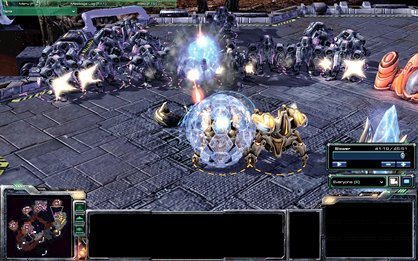
Challenge mode promises exhaustive learning techniques, according to Chris. “It shows you, and then tests you and has you try to beat these challenges.” It’s like being back in school, albeit a school where you’re given control of murderous bugs and asked to run up to your teachers and eat them before the bell rings for lunch and your teachers get automatic weaponry. This intensive schooling will, Blizzard hope, reduce the amount of people put off by their first steps into the whirling, dizzying online experience, as potential players have been in previous games.
“Challenges attempt to teach some of those things other players pick up by stomaching a number of losses. We try our best to help people not go in there not knowing anything and then have bad losses a few times in a row and say ‘this isn’t for me’. That did happen with Warcraft III and StarCraft.” What to do with all of these finely honed counter-rushes and warping-sneaks and M/M/M attacks once you’ve drilled them into your head and your index finger? There’s only one place left to go: the toe-to-toe, pause-and-you’ll-die, oh-god-the-rising-panic multiplayer.
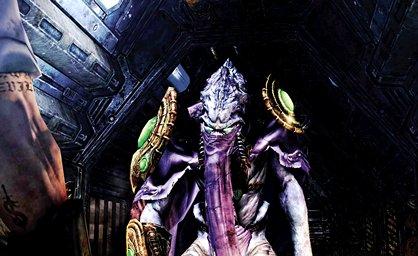
“It’s a stressful but fun experience,” says Chris. “I compare it to playing an FPS. We were getting games where you have landslide victories and now we’re at a point where you’re either effective or could’ve been effective if you’d just realised a few things.”
Chris maintains the beta is nothing yet but a balancing act to test the resilience of the newly revamped Battle.net system, and the game’s race vs bigger race vs race-with-more-legs asymmetry. Standing underneath the lopsided pile, propping it up with quicker reload times or unit prices, are Blizzard, currently churning out patches and updates to change core aspects of the game and the little dudes you control. Blizzard are fully aware that one slip, one mildly overpowered unit, could bring the whole house of hardcore multiplayer crumbling down amid cries of “OMG OP!!!”
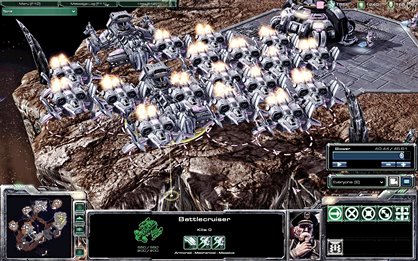
The biggest change so far has been to the Terrans: “they were buffed up fairly intensely and we’re continuing to look at that. We’re still seeing some people feel like they’re still not there yet.” Patch notes reflect this concern, bumping the time of infantry upgrades – vital to defend against the other races’ early rush gambits – down by a significant 30 seconds. Getting marines to bring their long-range weaponry to bear is now an easier experience, levelling the playing field.
It works both ways. We asked Chris about his approach to overpowered strategies and that StarCraft staple, the rush. “People will figure out rushes, we need to make sure they’re not too abusive, but we don’t want to shut down the rush as a key part of the game. Another example: we’re seeing a lot of use of warping right now – the warpgates for the Protoss – and people using that as much as they can, and we’re coming up with ways to make it part of the Protoss arsenal but not make it overpowered.” Changes which came post-interview to the Protoss include sapping the Zealot – their base melee unit – from a shield strength of 60 to 50. It’s the little things.
Sign up to the GamesRadar+ Newsletter
Weekly digests, tales from the communities you love, and more
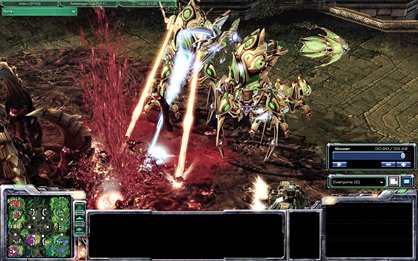
This balancing isn’t just for the benefit of the high level pros, quibbling over milliseconds and build orders. The revamp to Battle.net inherent in StarCraft II is a core reason for its lengthy delays, but it’s offering a wide-open window to new players, one previously held shut by the twin arms of ignorance and fear of the hardcore. With online communities now the norm in games rather than the exception, Chris reckons we’ll all take to the competitive side much more: “Battle.net was a place you went to, and it had this perception I think that it was a hardcore place, and you only went there if you were really into the game. But now the online experience is integrated, you’re always online, your friends are always there, so it’s not a scary thing.”
The lessons of Challenge mode will be reinforced through video tutorials and match replays, Chris says. “Our intention with Star Craft II is to save them up to the network and let people download and watch them, paying attention to the pro and platinum leagues and what players do so they can learn.”
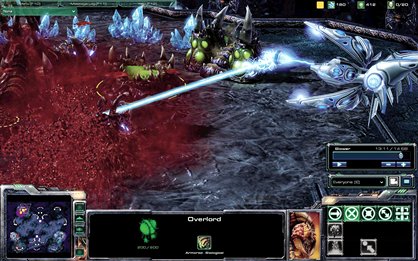
Battle.net’s ubiquity extends beyond hosting games and replays. Its robust friends and matchmaking systems is to be complemented by support for modders tinkering with the code. Blizzard understand the importance of modders and mapmakers in extending their games beyond their typical span of influence. “Our hope is that there’s going to be entirely new styles of games coming out of StarCraft II. Warcraft III’s tower defence maps were a phenomenon, and we want people creating things like that.”


